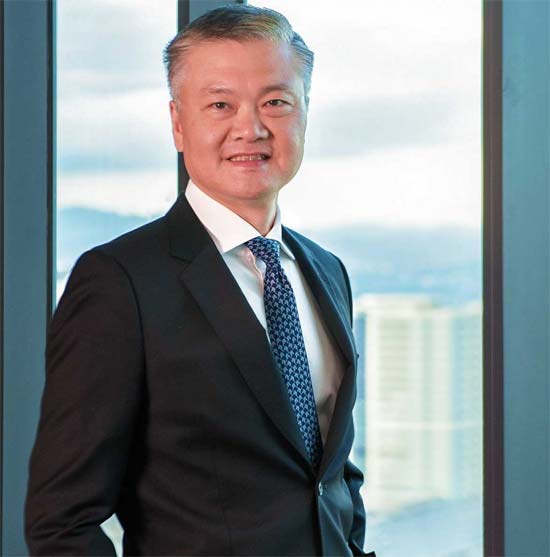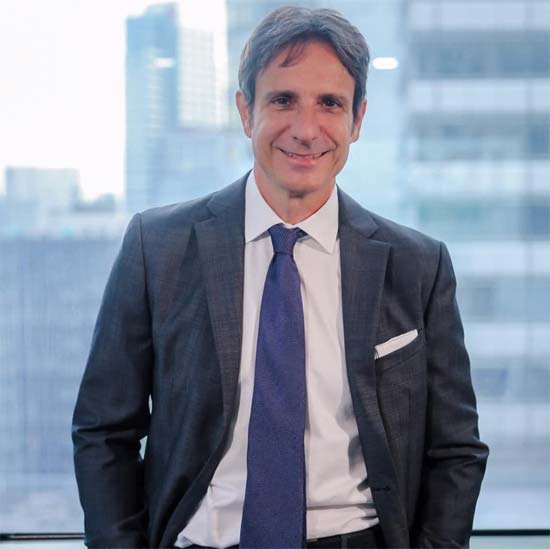Being a second-generation leader in any business may seem like a walk in the park. With the foundation of the company already established by earlier generations, all that’s left for the next leader is to keep the business running. But some second-generation builders attest this is just a common misconception.
While it is considered a blessing to be a second-generation leader, there are challenges for them especially with the changing times.
“I think it’s a different kind of stress,” Century Properties Group Inc. president and CEO Marco Antonio says in a recent webinar organized by Property Report PH.

‘Blood, sweat & tears’
Antonio, the son of Century Properties executive chairman Jose E.B. Antonio, said while he is very appreciative of all the opportunities that have been given to him by virtue of “the blood, sweat and tears of the first generation,” he emphasized that he still needs to put the hard work in to be able to reap the rewards.
“I never felt any entitlement. But I’m very appreciative of the platform that was already there that we can build upon,” Antonio says.
Cathay Land Inc. president Jeffrey Ng shares the same view, adding that the new generation of leaders have more challenges to face.
“It’s easier for me right now in the sense that I don’t have to start from scratch. On the other hand, it’s also more challenging because now, things are more competitive, more complex and businesses are bigger,” says Ng, son of the late steel tycoon John Ng, founder of Cathay Metal Corp.
“You have to manage it on a bigger scale. So we really have to step up to the plate and pay attention to many other things being built, pay attention to the details and make sure that the things we develop are for the long term,” he adds.
Keeping the family legacy
As a second-generation leader, Ng emphasizes the need to continue the legacy of the earlier generation.
For Ng in particular, this means developing projects for the long term.

“I think basically, you have to develop things, look at things for the long term you have to make sure that we continue the legacy of building good, long-lasting projects,” Ng says.
Antonio echoes Ng’s views, saying that it is the duty and the responsibility of the second generation of leaders to build on the legacy of the first generation.
“As the second generation, we hope to build stronger pillars for the organization. It’s really rallying the company toward today’s generation,” Antonio says.
A new player
While a lot of today’s leaders in the real estate industry are from the second or third generation of builders, there are still new movers and shakers. They, too, are making waves in today’s property market.
One of them is Italian architect Romolo Nati, chairman and CEO of Italpinas Development Corp., a property developer focused on building sustainable projects.

When Nati established the company in 2009, there were already a lot of good developers in the market, a challenge he faced.
“To be a second-generation developer, you have to provide something new, something different, something that has not been done before,” Nati says.
“We need to go the extra mile,” he adds.
This has been the focus of the company since it launched its first project in Cagayan de Oro City called Primavera Residences.
Antonio also acknowledges the need for the second generation of leaders to differentiate itself from the previous generation, emphasizing his push for product innovation.
“So my father really started with high-rise condo development, but we injected a lot of unique, differentiated features in our projects,” Antonio says, adding that this was prompted by the emerging lifestyles of the residential market.
Among these innovative products offered by Century Properties in today’s market is the man-made beach of its six-hectare Azure Urban Resort Residences in Parañaque City.
In line with offering unique products, Antonio also highlights the need to diversify the company’s offerings. He cited that from being established as a core condo development business in the previous generation, the company has now expanded to other segments of the property market such as affordable housing and leasing assets.
“So I think in terms of unique characteristics, it’s really I guess product, technology information and how that can be done in today’s context as well as growing and diversifying the business,” Antonio says.
Use of technology
Despite the challenges of being a new player in the market, Nati, as part of the next generation of builders, was able to leverage on using various design technologies, which were not available to the previous generation, to offer unique value propositions to their clients, in line with his company’s focus on green developments.
Nati says that with the use of software, the company is able to analyze the direction of the wind and sun, elements which help their developments become more sustainable.
Using a parametric software allows local conditions to be factored in the design of the building and its features so that it is maximized for natural ventilation and natural light, he adds.
Adapting to the pandemic
While technology can be used to add to a project’s value proposition, it has also been vital in helping businesses adapt during this pandemic.
For Cathay Land, Ng says Cathay Land’s developments have wide open spaces that have allowed the company to serve the needs of its customers during this pandemic.
Cathay Land’s projects already cater to the needs of their customers amid the pandemic, he says.
“People want to have more space in their rooms, so we provide three to four bedroom units. So people can now work from home and even their children can study from home. So these are what I think we can offer our home buyers—space and the amenities,” Ng says.
These wide spaces can be found in Cathay Land’s projects such as its South Forbes project, a master-planned township of boutique communities located at the Metro Silang-Sta. Rosa-Tagaytay business and residential hub.
For Century Properties, Antonio says the company has been applying end-to-end digital solutions in its operations.
In addition, he shared that the company also conducts unit turnovers digitally. Antonio also stresses the importance of technology in doing business today especially with the pandemic.
“For our buyers abroad—our kababayans—instead of them coming back home, we do the unit turnover online,” Antonio says.
Learning from the previous generation
While builders of today continue to inject their own styles into how they run their business, this does not mean they have forgotten the values they learned from the previous generation.
For Antonio, the guidance of the previous generation is very much present, as his father is still “very much hands-on” in running the business.
Ng, for his part, says the company continues to adhere to the legacy established by his father of developing a strong land bank and good, quality projects of the times. He also does not forget to give back to the community, as his philanthropist-father has taught him.
For Nati, he is thankful that he is also able to learn from older Philippine developers and from everyone else.
Indeed, as the next generation of builders aims to continue and expand their businesses further, more exciting and innovative things await the Philippine property market.
The webinar was made possible with the help of Property Report PH’s partners: Century Properties, Italpinas, Victor Consunji Development Corp. and Robinsons Land Corp.
